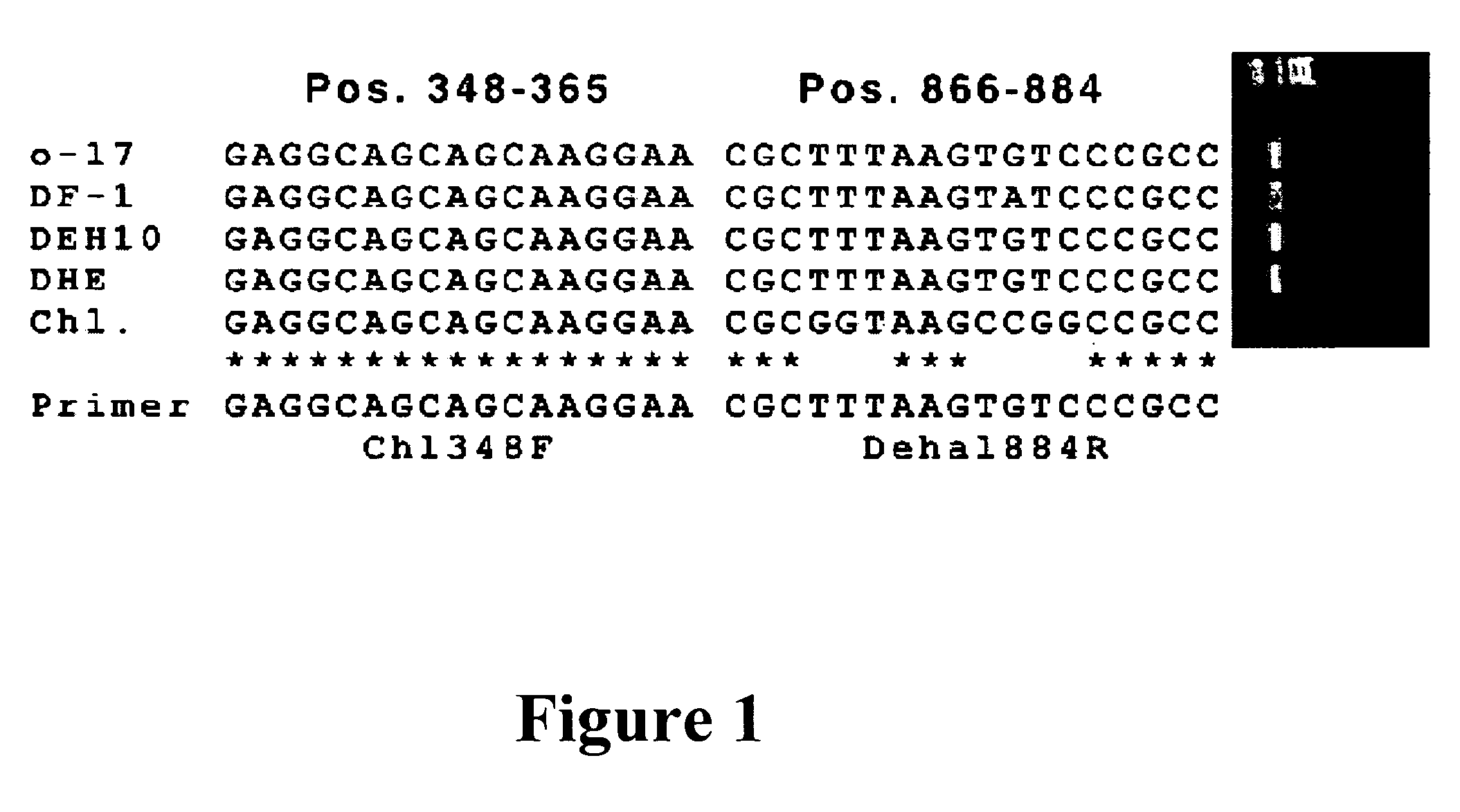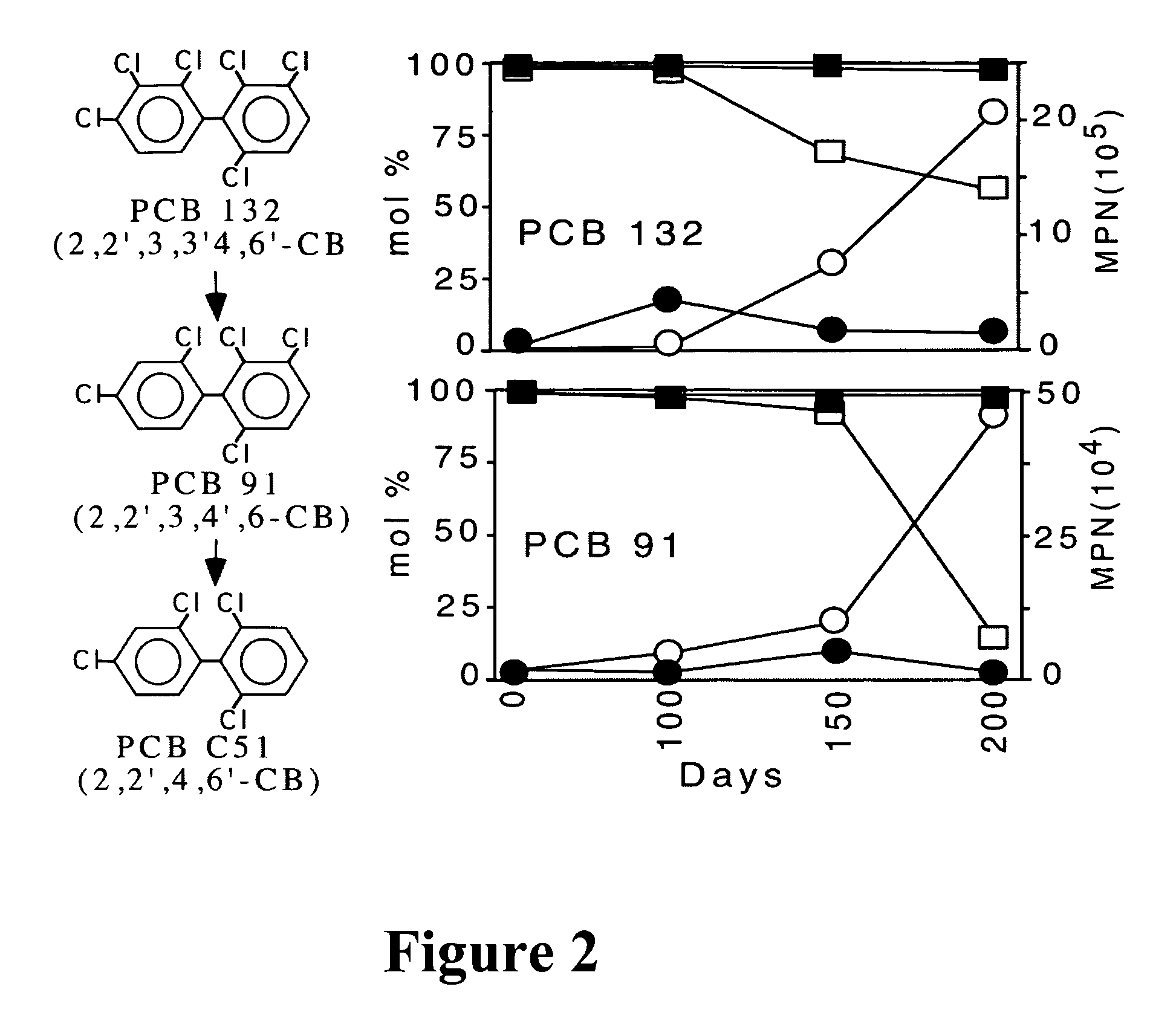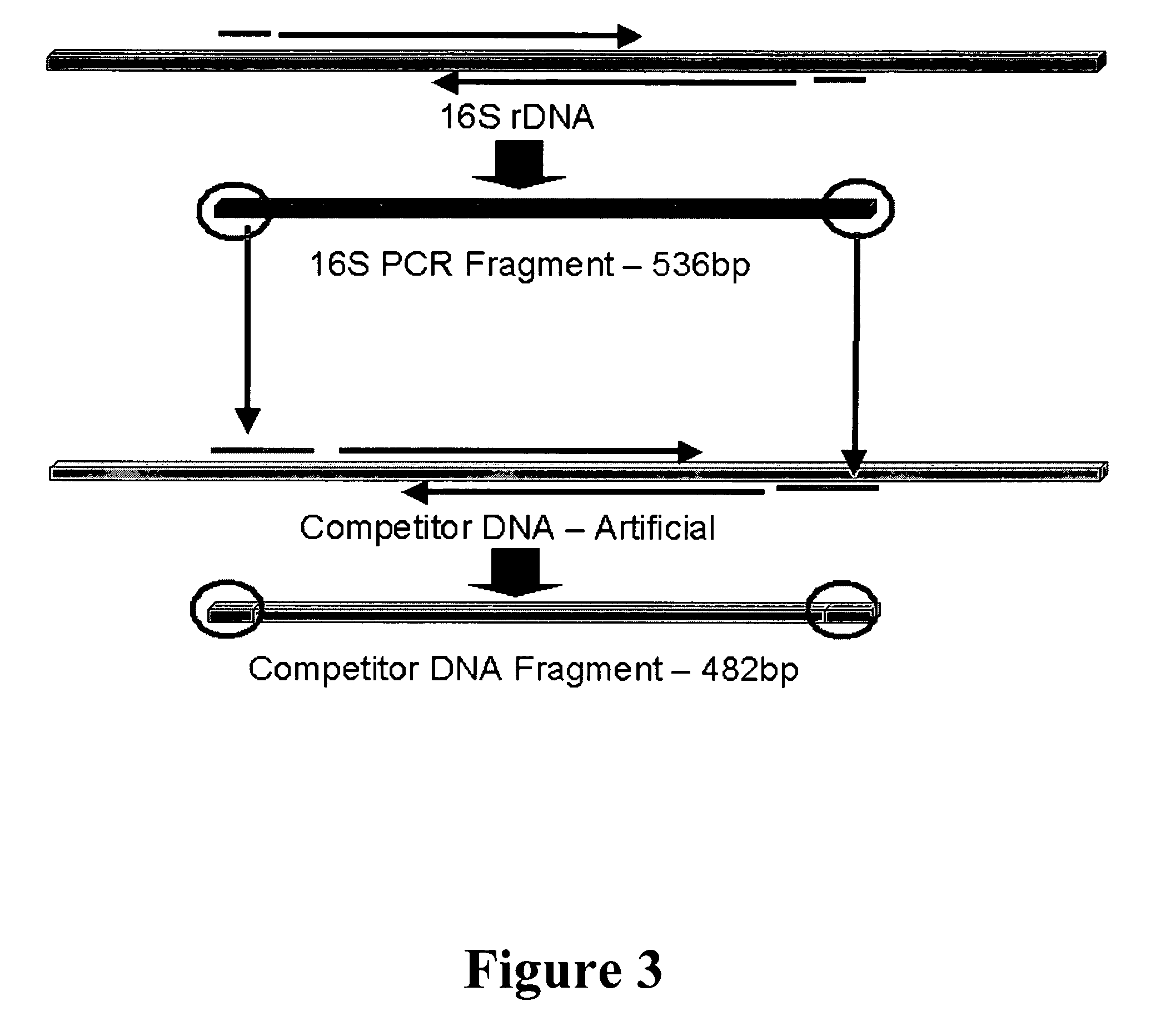Gene probes for the selective detection of microorganisms that reductively dechlorinate polychlorinated biphenyl compounds
a technology of polychlorinated biphenyl compounds and gene probes, which is applied in the field of probes or primers for identifying pcb dechlorinated microorganisms, can solve the problems of affecting human population, affecting human health, and affecting the accumulation of polychlorinated, so as to facilitate bioremediation treatment and maximize the overall degradation of pcbs
- Summary
- Abstract
- Description
- Claims
- Application Information
AI Technical Summary
Benefits of technology
Problems solved by technology
Method used
Image
Examples
examples
[0083] Most PCB dechlorinating bacteria have been detected in a diverse group of microorganisms within a deep branch of the Green Non-sulfur bacteria that have been largely undetected in the past. Most of the PCB dechlorinating bacteria are related to the Dehalococcoides spp., which are capable of dehalogenating chlorinated ethenes. One species, Dehalococcoides ethenogenes, completely dehalogenates perchloroethene (PCE) and trichloroethene (TCE) to ethane and commercial PCR primers can detect these microorganisms in environments that generate ethene in PCE and TCE contaminated sites. However, the primers often do not detect microorganisms in sites that do not completely dehalogenate PCE and TCE to ethane. The PCB dechlorinating microorganisms DF-1 and o-17, which are only 89% similar to Dehalococcoides dehalogenate selected PCB congeners, PCE and TCE to only DCE and dehalogenate hexa-, penta-, and tri-chlorobenzene. In light of the fact that the presently described primers Chl348FGC...
PUM
| Property | Measurement | Unit |
|---|---|---|
| Temperature | aaaaa | aaaaa |
| Fraction | aaaaa | aaaaa |
| Fraction | aaaaa | aaaaa |
Abstract
Description
Claims
Application Information
 Login to View More
Login to View More - R&D
- Intellectual Property
- Life Sciences
- Materials
- Tech Scout
- Unparalleled Data Quality
- Higher Quality Content
- 60% Fewer Hallucinations
Browse by: Latest US Patents, China's latest patents, Technical Efficacy Thesaurus, Application Domain, Technology Topic, Popular Technical Reports.
© 2025 PatSnap. All rights reserved.Legal|Privacy policy|Modern Slavery Act Transparency Statement|Sitemap|About US| Contact US: help@patsnap.com



